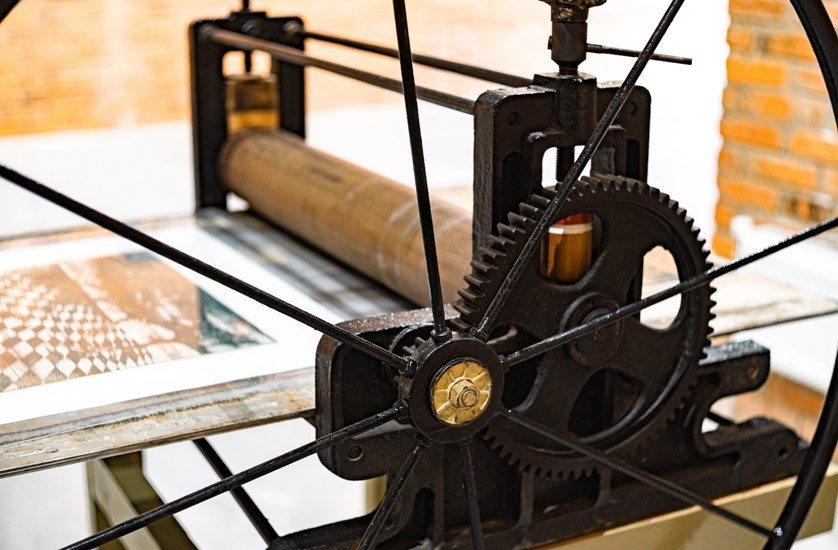
Blending traditional methods with innovative printmaking, lithography changed the course of art history. Quickly adopted by creatives, it offered a way for artists and graphic designers to reproduce their work at scale in an easy and affordable way. Lithograph prints from great artists still hang proudly by the side of oil paintings and watercolours in museums around the world.
A potted history of lithograph printing
Lithography was discovered by German playwright Alois Senefelder in 1798. Senefelder was looking for a way to copy and share his plays. Little did he know that it would be used later by some of the world’s most renowned artists.
By the 1820s, lithographic printing had become commercially popular. Paris was littered with posters produced using this technique, famously advertising dance halls such as the Moulin Rouge and Le Chat Noir.
The advertising industry's adoption of lithographic printing significantly boosted its popularity, and it remained a widely used technique in both commercial and fine art.
In the 20th century, artists like Picasso, Braque, and Miró, associated with movements such as Cubism and Surrealism, experimented with lithographic printing, producing limited-edition runs of their distinctive artworks.
How does lithographic printing work?
Lithographic printing closely resembles traditional drawing techniques, which is why it was so readily adopted by artists. In particular, Picasso favoured the lithograph’s versatility as the markings can be easily rubbed out and re-drawn.
The artist draws on a limestone tablet using a waxy crayon or greasy pen (lithography meaning ‘stone writing’). The design becomes embedded in the stone's porous surface, which is then treated with an acidic solution. This chemically etches the greasy image into the stone, fixing it in place.
When the ink is applied, it adheres to the waxy crayon, while the blank areas repel the ink. Finally, a sheet of paper is placed on the stone, and under the pressure of a printing press, the inked image is transferred from the stone to the paper, creating a precise and delicate print.
Lithograph’s famous followers
Art's most notable names have experimented with lithography. Perhaps the most famous is Henri de Toulouse Lautrec, whose posters of the Moulin Rouge are considered precursors to what we know today as graphic design.
Other artists associated with the lithograph include Pablo Picasso, Edouard Manet, Diego Rivera, and, famously, Edvard Munch, who produced a lithograph version of The Scream.
The rich tones and intricate details of these lithographic prints highlight the artist's raw talent. In many cases, it would be hard for the untrained eye to tell a pen-and-ink drawing from a lithograph.
Are lithographs valuable?
Similar to a painting or drawing, the value of a lithograph is determined by its rarity, the artist’s notoriety and the print quality. A lithograph in good condition by an unknown artist, part of a large print run, is unlikely to be valued highly. In contrast, some limited edition lithographs produced by renowned artists have sold for six figures at auction. Condition, provenance, and demand also play critical roles in determining a lithograph's market value.





